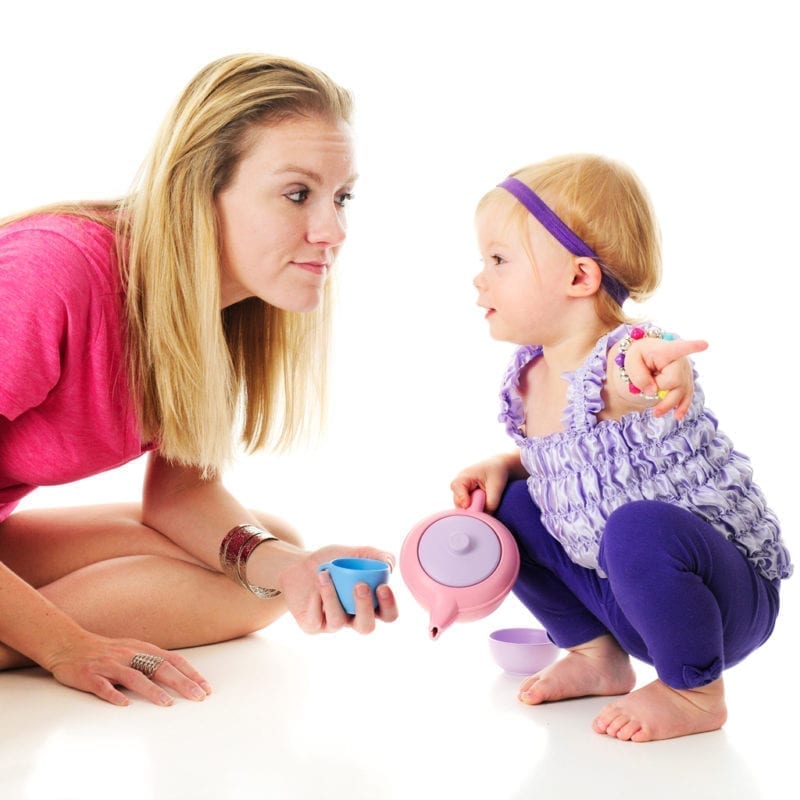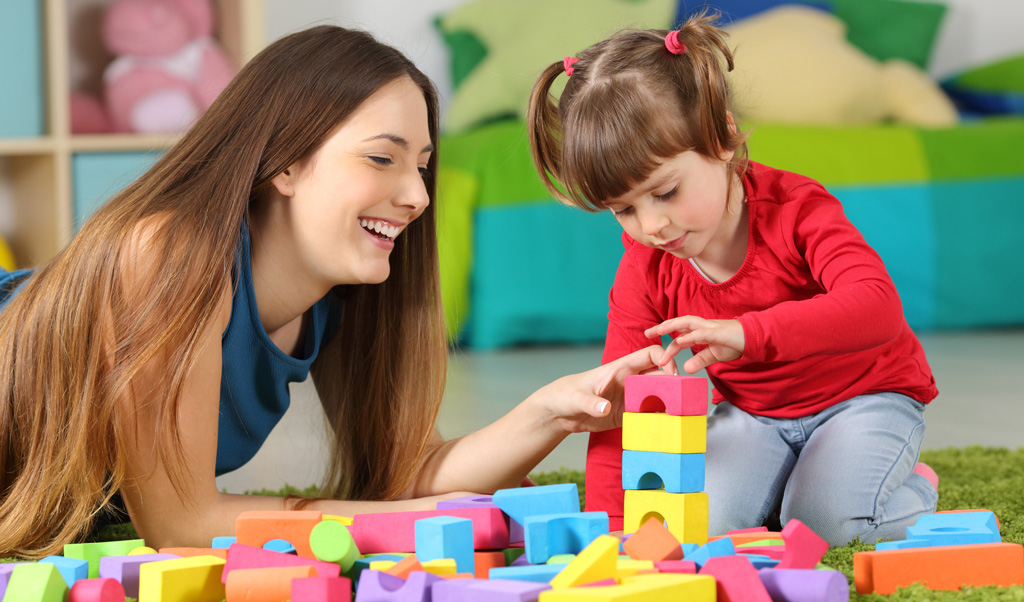From babbling babies to talkative toddlers, learning to talk is a big leap for our little ones – and it’s just as exciting for us parents, too! As parents, we need to understand what a typical speech development guide is like, so we can manage our own expectations as well as encourage the love of language in our children.
What is the difference between speech and language?
Speech refers to the sounds that make words through talking. Whereas language is our way of communication via the use of words. This comprises the use of words and gestures to put our message across to the other party, and understanding what is said to us.
Why is language development important at the toddler stage?
Did you know that babies have their first lessons while they are in the womb?
Remember how your little baby responds to a familiar voice or sound when he was still inside you? When they come into the world, the fastest learning occurs from ages two to five years old.
Speech therapist, Melanie Yates of Treetop Therapy shares some the below speech milestone guide to look out for in a toddler to assess his language development.

General speech milestone guide for toddlers
While there may be certain stages that are age-specific, understand that each child is different and develops at varying pace.
By age two:
- a child might say about 50 words and start putting two words together (e.g. daddy shirt)
- a child might be able to understand simple questions and follow simple instructions
By age three:
- a child might say between 100 to 200 words and start putting three words together (e.g. mummy drink water)
- verbalisation becomes clearer and child is able to tell you what he wants or doesn’t want
Speech Therapist, Melanie Yates extends tips to parents on what they can do to encourage their language development during toddlerhood:
How to encourage your toddler’s language development

- During playtime with your toddler, position yourself at his level to ensure good eye contact. This may mean you have to lie on your tummy if your little one is sitting on the floor, or you may be sitting on the floor when your toddler is seated on a stool.
- With short and simple sentences, initiate a conversation by commenting on what you child is doing or what is present in front of you, such as a painting or a book.
- When going about with chores in the house or when you are out and about with your toddler, talk about the things you see, hear, touch or smell. Doing so helps him establish an association with his five senses as well as pique his curiosity.
- If your toddler says something incorrectly, mention the right word or words immediately after.
- If your toddler is already able to say words, consider using language that is one level above his current abilities. For example, if he can say single words, you can use simple two- to three-word sentences during your conversations with him. If the child says “shoes,” you could say, “shoes are dirty.” Use the relevant model language that you would like your child to imitate. Do not forget, toddlers are quick to do that whether you want them to or not, so it’s important to keep your language in check, too!
- Read widely and often. Exposure to books have been proven to heighten interest in reading and the language, as well as build a healthy habit from young.
- Children learn best when their interest level is in place, so get creative and have fun!
Did you know your toddler’s social and emotional development are also related to language milestones? Toddlers love to help out with simple errands and being involved in what adults do on a daily basis.
If your toddler sees you in the kitchen preparing to cook, he may like to help by getting the ingredients from your cabinet or fridge. So get your toddler involved in chores by giving him simple instructions. This will certainly get a conversation going between the both of you!
10 easy tips to encourage language development in toddlers
1) Keep talking
Make it a habit to introduce new words everyday by pointing out the different objects in your toddler’s environment.
At the same time, speak to your child as you would to another adult and avoid using “baby language”. This will encourage him to use proper words, rather than baby talk, cute as it may be. Talk as much as you can and often, to keep the engagement continuous.
What you can do: Describe your daily activities to your toddler. If you are picking out an outfit from your wardrobe and your tot is beside you, share why you are peering into your wardrobe. Say, “Mummy is going to work, so Mummy needs to change into work wear.”
Then, pick a few outfits and ask your child, “Should Mummy wear this green shirt or that white dress?” There will be times where your child may not appear to be paying any attention but, rest assured, he is listening!
2) Use cues and actions to orchestrate
When you help your toddler learn to talk, take advantage of the cues around you and describe what is happening, using actions and the appropriate words.
What you can do: If it’s time for lunch, make a grand gesture of putting plates on the table and smelling the food before saying, “Ryan, it’s lunch time!”
Your child may not understand the word “lunch” at first, but will soon get the idea that whenever you say “lunch” in the middle of the day, it means it’s time to eat.

3) Create opportunities for a conversation
Set the scene and create opportunities for your child to respond. Ask your toddler plenty of simple questions throughout the day. You can start by asking ‘yes’ or ‘no’ questions.
As he becomes more responsive, ask more complex questions like what your child wants to eat or where he wants to go. Don’t forget to pause for a few moments after asking a question to give your child time to come up with the words to reply.
What you can do: After a day out, ask your toddler if he enjoyed the activity. Take photos when he was playing, and ask him who is in that photo. Ask him if he liked the bear ride or the dog ride better, or if he would like to go to that place again with you.
4) Simplify
If you can, use simple words and short sentences to make it easier for your toddler to grasp what you’re saying.
What you can do: Single syllable words and commonly used terms make it easy for children to pick up and associate the words to an object or action. For example, use the word “run” instead of “sprint,” “shoes” instead of “footwear,” or “rice” instead of “carbohydrates.”
5) Repeat words to correct
At this stage, your toddler might say ‘nana’ instead of banana or ‘tato’ instead of potato. Make sure that you offer your toddler the actual word whenever this happens to reinforce his knowledge.
If your child says ‘nana’ reply by saying, “Yes, this is a banana.” In fact, your toddler has learnt to relate and use the right word to get his message across. So give him a clap!
Pronunciation is another ball game altogether, but take heart, your little one is learning everyday.
What you can do: Always use the right word when communicating with your toddler, even if it means him showing you a blank look. If he says “nunny” instead of “bunny,” repeat the statement, “Oh, did you mean that you want to play with bunny?”
Consistent reiteration and exposure helps your tot understand and listen to how the words are said, and soon enough, he will be saying it the same way you are!
6) Make it fun
Learning through fun and play creates additional motivation for your child, especially when it involves interaction in a social environment (with adults or other children, and even their toys!).
During toddlerhood, you may discover that your child talks to himself, especially before falling asleep or when he has just woken. Don’t be surprise to find out that what your child says is actually making sense and not some mindless babbling! It is known that the benefits of language learning are credited to sociodramatic play, which is commonly observed in three year-olds.
Your three year-old may take on pretend play with others, role-playing different characters they meet in their lives. Most commonly role-played figures include parents, so when they say children are like sponges, you know what that means now!
Through conversing, your child is working on her understanding of other’s intent, picking up language constructions through communication and explores creativity through scenarios and story lines. He may also showcase an assertive side by instructing others to act a certain way, or say certain words.
What you can do: At home, parents can introduce new words with songs or nursery rhymes. All the singing and the actions will help him remember the new words. For example, singing ‘Head and Shoulders, Knees and Toes’ allows your tot to learn about the relevant body parts while saying the words.
Fueling your toddler’s imagination through pretend play helps build the use of language and his linguistic abilities too. Your little one is learning new words amidst those singing and laughter!

7) Constant exposure
When your child is already beginning to talk, don’t stop at just teaching simple words. Move on to multi-syllable words and observe if your child can handle them.
What you can do: Use different tools to keep the constant exposure interesting, like flashcards, videos, books and toys to enhance multi-dimensional learning. With different mediums used, your child receives a variety of stimuli to arouse curiosity which helps to spur his language development, too.
8) Call his/her name
Always refer to him by name before saying a sentence. Maintain eye contact with your child when engaging him. Doing this will promote better understanding and helps your child to focus on what you’re saying to him.
What you can do: When asking a question, ensure eye contact and say, “Jayden, do you want cheese with your bread?” or, “Sarah, let’s go to the playground!”
9) Use pictures
They say ‘pictures paint a thousand words’ and experts agree that most of us are visual creatures, thus using pictures does help facilitate language learning in toddlers too.
Between the ages of 18 to 30 month, toddlers are able to imitate specific actions on actual physical objects which they have learned through a picture-book. If the picture shows a subject coming his hair, your child is able to associate that with a real comb and wish to mimic that very action, with an imaginary comb or asking for a real one.
What you can do: Make illustrations, photographs, magazines, newspapers, picture books your best mates. Point out everyday things that your child is familiar with such as ‘car,’ ‘cat’ or ‘dog’ to establish some level of confidence.
At the same time, start looking at ‘new’ items which might not less familiar to your toddler or he is unable to pronounce just yet such as ‘aeroplane,’ ‘giraffe’ or ‘water bottle’ to help grow his vocabulary.
10) Reading
Going back to basics with reading is a proven way of improving language development as part of communication.
Sources point out that reading offers a myriad of benefits to the toddler: increases vocabulary, word recognition, making connection of words and pictures, increases her ability to make context clues with the different characters in the books, develop a sense of the world around them.
What you can do: Parents can look for age-appropriate books for toddlers at the library, or the bookstores. “Brown Bear, Brown Bear, What do you See?” and “Goodnight Moon” are some popular books for toddlers that parents and children enjoy reading together. Reading is a great way to bond, too!
11) Each day, set aside a ‘special time’ solely for you and your toddler. Try to spend 10 minutes giving your child undivided attention and keep away distractions such as the television and mobile devices. If it gets too noisy, shut the windows and doors to keep external sounds out.
- Allow your toddler to pick a toy or books. Parents could also play some songs to sing together.
- Sit or lie to position yourself to be face-to face with your toddler. Maintaining eye contact is helpful during conversations, so your child can observe your facial expressions too.
- Let your toddler take the lead with what she wants to do with the toys. Try copying or extending what she does with them like combing their hair or moving the cars across the room. Try not to initiate directing her play, but allow her to be proactive by taking the step forward.
- Avoid asking too many questions or get worried with the silent playing session. Try reducing the number of questions you ask, instead make comments on what your child is doing. Silence is fine, too. Wait for your toddler to initiate communication with you, while you observe her actions and train of thoughts.
- Offer praises to your toddler. Positive reinforcement together with facial expressions and tone, help your child identify and learn about speech communication, too.
How can parents encourage toddlers to speak if they prefer to point?
Speech therapist, Melanie Yates of Treetop Therapy, offers suggestions on what parents can do if their toddlers prefer to point, instead of speaking.
- Consider tweaking the home environment in a bid to encourage your toddler to take the first step in communicating with you, or another person in the house. For example, place his toys or bowl on a shelf which he is unable to reach to create a situation which requires him to take a proactive approach to ‘ask’ for them. If your toddler points, ask him, “Do you want the toy car or your bowl?”
- Using gestures and signing are both effective communication methods. In fact, sources indicate that “the ability to sign basic words could prove helpful in boosting communication and providing a ‘bridge to the spoken word.’ It may also facilitate the acquisition of verbal and written forms of communication later on.” Conversely, signing does not inhibit talking but, rather, it aids speech development.
- Remember to get down to your child’s level when talking to them and maintain eye contact. Combine repetition with gestures and never insist that your child repeats a word after you.
How can I encourage my toddler to have a conversation with me?
- Each day, set aside a ‘special time’ solely for you and your toddler. Try to spend 10 minutes giving your child undivided attention and keep away distractions such as the television and mobile devices. If it gets too noisy, shut the windows and doors to keep external sounds out.
- Allow your toddler to pick a toy or books. Parents could also play some songs to sing together.
- Sit or lie to position yourself to be face-to face with your toddler. Maintaining eye contact is helpful during conversations, so your child can observe your facial expressions too.
- Let your toddler take the lead with what she wants to do with the toys. Try copying or extending what she does with them like combing their hair or moving the cars across the room. Try not to initiate directing her play, but allow her to be proactive by taking the step forward.
- Avoid asking too many questions or get worried with the silent playing session. Try reducing the number of questions you ask, instead make comments on what your child is doing. Silence is fine, too. Wait for your toddler to initiate communication with you, while you observe her actions and train of thoughts.
- Offer praises to your toddler. Positive reinforcement together with facial expressions and tone, help your child identify and learn about speech communication, too.
When should you check with your toddler’s doctor on his development?
With the above general speech milestone guide for toddlers, parents can have a rough idea on the stages of speech and language development your toddler should have. While every child develops differently, if your child is not saying words or attempting to communicate with you during this stage, you should consider seeking professional assistance as speech delays may point to other reasons including hearing loss and developmental disorders.
This story originally appeared on theAsianparent and is republished here with permission.


